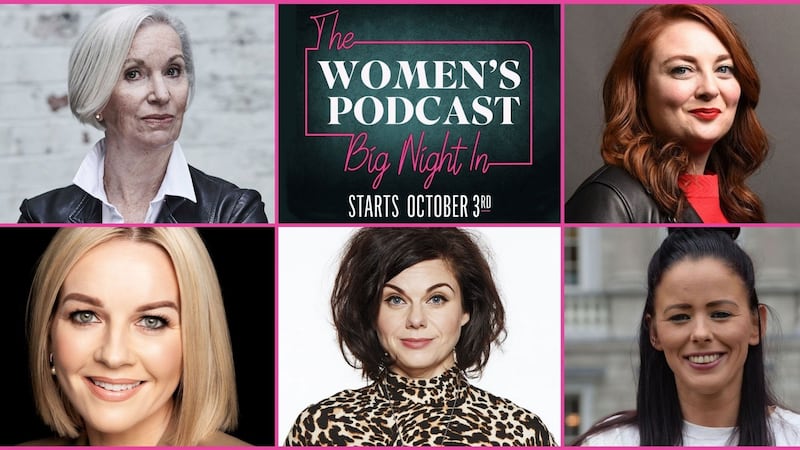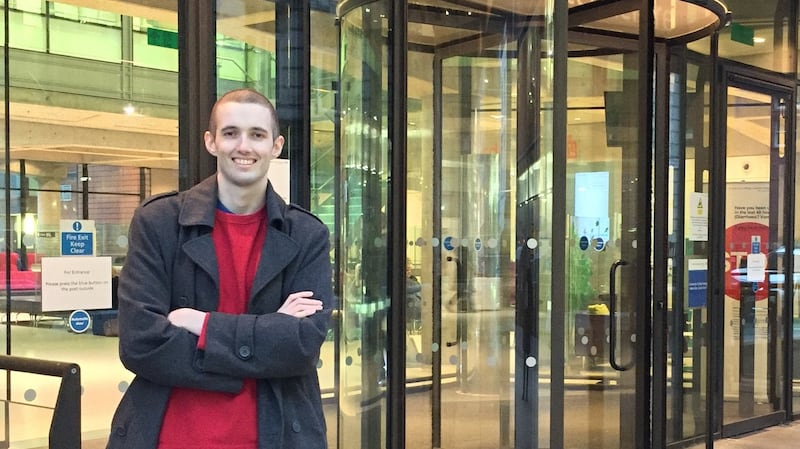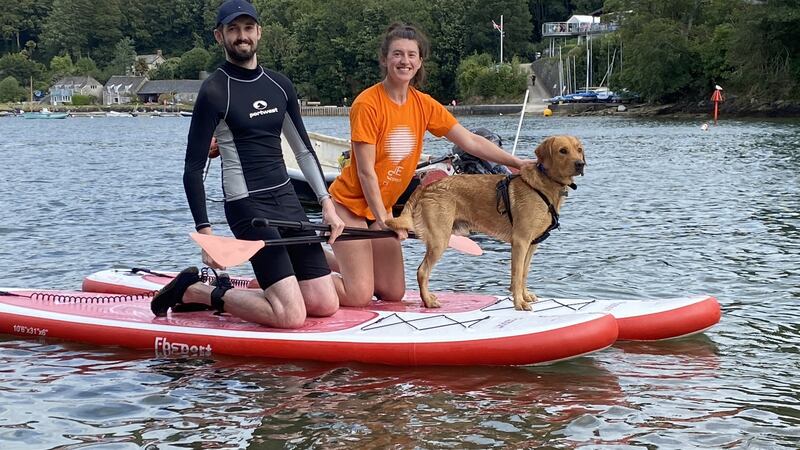I’d never really given much thought as to how I’d feel if my cancer returned. It simply hadn’t been on my radar.
In March, 2017, surgeons in the Royal Brompton Hospital, London, successfully removed a large tumour from the right side of my chest, along with parts of four ribs. It was the culmination of 10 months of treatment for a rare Ewing's sarcoma that included aggressive chemotherapy and radiotherapy. My NHS doctors, who were superb, inserted a life-lasting prosthesis in my chest to fill the hole where my ribs used to be and, voila, I was declared cancer-free.
Since then, I've remained under surveillance at University College London Hospital (UCLH) Macmillan Cancer Centre on Tottenham Court Road. My X-rays and CT scans had all been clear of any signs of a recurrence of the disease.

That was until a year ago – Friday, September 27th, 2019.
"So Conor, your X-ray, we've seen something on it and we're not sure what it is," Dr Sandra Strauss, my oncologist, said.
Dr Strauss had bent down slightly to look at her computer screen. I felt a huge rush of unsettling energy go downward from my head to my feet and my heart sank. I looked at her and asked what she had seen. “There appears to be a small shadow on your left lung, a speck, like this,” she said, and then lifted and curled her hand to indicate a small spherical object. “I’ve ordered a CT-scan, which you can head over to soon in the main UCLH building,” she said. “I’m really sorry.”
My eyes welled up slightly. I knew what this could mean. When I was first diagnosed in May 2016, aged 24, they had discovered a tumour “the size of a melon” in my chest. Upon initially learning of the size, I believed it could be my end. But as I learned more about it, I was told that the key to my prognosis was whether it was localised or had metastasised. Luckily, in my case, it was localised, so they could shrink it and cut it out. What’s particularly nasty about the type of tumour I had, though, is that if it recurs, sometimes many years later, it can appear as a metastasis in the lung and from then onwards the prognosis is often considerably worse.

“I’m not going to call you,” I heard Dr Strauss say. My head was bowed and I was filled with increasing dread. It would be a week of waiting and wondering. I could really be in trouble here. They sometimes rang me when results were fine, so given the tense atmosphere in the room, I assumed it could likely be bad news and they’d need time to figure out a treatment plan.
I asked Dr Strauss what she thought it was. “We don’t know, I’m afraid,” she replied. “Hopefully, it’s an artefact or something. So what we’re going to do is have you back here this day next week.”
I thanked her, left the room and went downstairs to phone my mother, who was at home in the west of Ireland. I told her about my conversation with Dr Strauss and she asked me to repeat certain sections of it. "I'm not prepared to panic yet until we have the CT-scan results," my mother said, but I could tell that she was shocked. My recovery had been going very well and we were both taken aback by this sudden development.
While I went to have my CT scan, my mother messaged friends and booked a flight from Knock to London. Whatever news Dr Strauss had in a week’s time, we’d hear it together.
I texted a few friends who know me well. Messages of support and love came through. My friend, Clare Dawson, a sarcoma survivor and London Network Leader for Shine Cancer Support for young adults, told me how sorry she was to hear my news but to remember that X-rays are a blunt instrument. "You've got this, Mr L," Clare said in a text. An Irish surgeon and long-time family friend told my mother the same thing. "The chest X-ray was invented in 1895," Prof Kevin Barry, consultant surgeon at Mayo University Hospital and Galway University Hospital, said. "It is only preliminary in effect."
Terrifying
However, my first experience of X-rays had been terrifying. In April 2016, I went for a chest X-ray after injuring my ribs during a football match. On May 1st, 2016, while sitting in a Joe & Juice in central London, I received a phone call from my GP in Covent Garden to tell me that I had a “massive mass in my left lower pleural-based zone”. It turned out to be the giant Ewing’s tumour.
And now this: a dodgy X-ray three-and-a-half years later. I had plans to see my girlfriend, Helena, that evening on Southbank, near the London Eye. When I met her near Waterloo station for dinner, she pointed to the plaster on my arm from my CT-scan and I told her about the preceding few hours. She took it all in and seemed to handle it well, saying we had now entered “a period of grace where there was no certainty it was back”.

Once outside, with Big Ben under construction as a backdrop, I became emotional and upset about what the future might hold. Having been through the hell of cancer treatment, I told Helena that if it turned out to be bad news, I wasn’t sure I could put her through what was to come.
The weekend passed, surrounded by friends. One of my best friends, Richard McCormack from Galway, was visiting and he always finds a way to make me laugh. I wanted to enjoy the weekend so I didn't tell him my news. Monday came and so did another long-planned event: a jazz night at the Groucho Club in Soho. Five other friends joined me, including another Shine Network Leader, Jessica Murphy, and my former City University London classmate Stéph Bosset. Their supportive words, sounding over the low tones of jazz, were comforting.
My mind wandered while my friends chatted amongst themselves. What about the London Marathon? Shine had given me a coveted place to run. What should I tell them and when? Then my friends and I parted company because we all had work the next day.
My brain was trying to translate what Dr Strauss meant <br/>
Since postgraduate school, I had done occasional work as a film extra. On Tuesday, I had been booked to do a Calvin Klein commercial, which had a 6.30am call time, and I decided not to cancel. I pondered why I was bothering to go, considering what was swirling around in my head, but it seemed better to have the distraction of work. So there I was, back on Southbank. Richard Madden, from BBC's The Bodyguard and HBO's Game of Thrones, was the star of the commercial and he was standing about five feet away from me. I saw the absurdity of being on a 10-hour shoot, standing fairly close to a Hollywood actor, feeling my rib cage and wondering whether the damn disease was back.
After the shoot wrapped, I decided to make my way to Leicester Square to see a movie and unwind. Before the film, I rang my mother, who was packing for her flight to London the next day. After I hung up, I noticed a missed call from a number I didn’t recognise. I rang the number back and instantly recognised the voice.
“Conor?” It was Dr Strauss and my heart skipped a little. “Conor, the scan is okay, it’s fine.”
The CT scan was “like all the others”, I heard her say. What about the “speck” in my lung on the X-ray? It may have been a defect in the film, she said. The team would have to investigate.
My brain was trying to translate what Dr Strauss meant:
No recurrence. No cancer. No Friday appointment. No need for my mother to fly to London to help manage a crisis because this time, there was no crisis.
A clean slate! I was immensely relieved and grateful, though I know only too well that not everyone is as fortunate. As welcome as it is, good news can be shocking, too, and somehow I hadn’t been prepared for it. I thought that, at the very least, there was something in or on my lung. It never occurred to me that it could be a defect in the film. I told my news to my mother and Helena, who, in turn, told their friends.
“It rattled you both to the core,” Prof Barry said. “These kinds of reports can occur during surveillance, but obviously now I am delighted for you both.”
Hard training
My attention returned to marathon prep. By January of this year I was deep into hard training, running up to 13 miles at weekends. Then Covid struck and the race, scheduled for April 26th, was postponed until October 4th. Stuck in lockdown and unable to get to a gym, my training took a hit, though I went for runs. Over the summer I wondered how hard I should train in London’s 30-degree heat for an event that might not take place.
Finally, on August 6th, event director Hugh Brasher announced that, for the first time since 1981, the marathon would not take place in its usual format. It would be an elite-only event in an enclosed looped course in a secure biosphere in St James's Park, near Buckingham Palace. So on October 4th, Kenyan long-distance runner Eliud Kipchoge, who broke the two-hour marathon barrier in 2019, will go head to head with Ethiopia's Kenenisa Bekele. World record holder Brigid Kosgei, from Kenya, is running, too.
All other runners with a place were offered the chance to take part in a virtual event on the day or to defer until October 2021 or 2022. I chose to defer my place until 2021 and I'm not alone in hoping mass participation events will be back in force by then. (Though I've deferred my race, I continue to fundraise for Shine. I've raised over £2,000 of my £3,000 goal and all donations go directly to them).
Right now, humanity is facing another marathon of sorts: surviving the pandemic and protecting one another until science comes up with solutions. I hope one day to feel the thrill of running through the streets of London with my family and friends roaring me on from the sidelines.





















